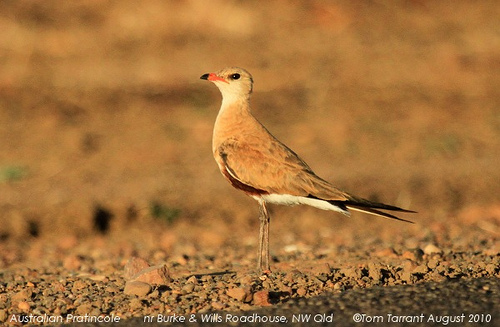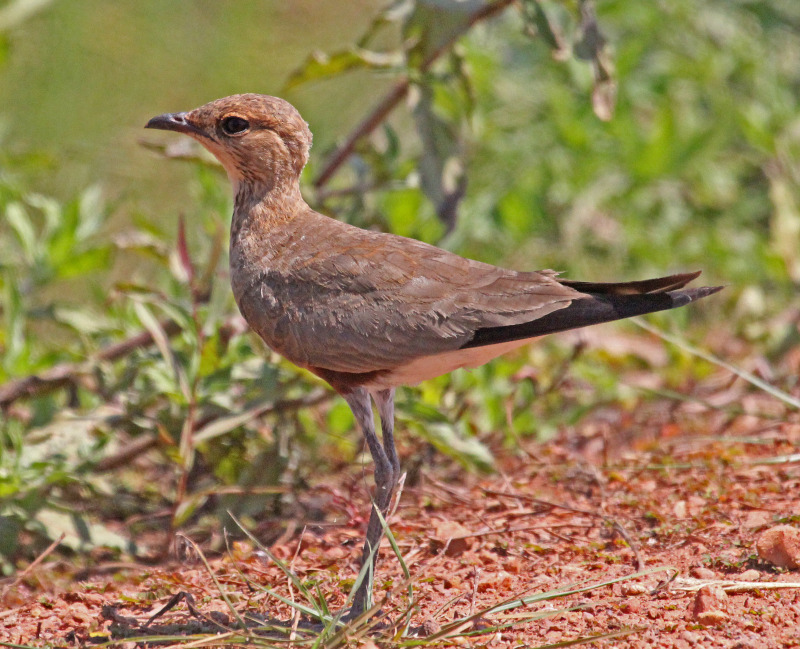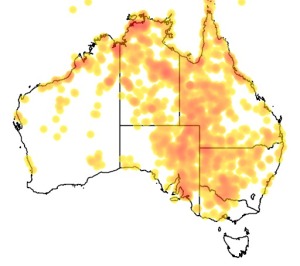Colours
Distinguishing features
The sexes look alike however their breeding and non-breeding plumage differs. �In breeding plumage, the head, neck, breast and upperparts are a sandy brown grading.The wings are pointed and black and there is a black loral strip. The chin and throat are white and the breast is a sandy brown. The bill is bright red with a black base and the iris is dark brown. Legs and feet are grey to black.
The non-breeding plumage is not well known as there are also effects from seasonal and individual variation. The loral stripe is fainter than when in breeding plumage and the base of the bill is paler. The upperparts are grey-brown with sandy-buff fringes. Sometimes there are dark flecks at the borders of the pale throat.
For juveniles, the plumage is similar to a non-breeding adult but a slightly paler sandy brown colour. The lores lack the black colour and the forehead, crown and nape are streaked dark brown. The bill is grey-black with a faint reddish base.
In flight the upperbody and inner wing are sandy brown with black on the outer wing.The tail is square-cut with the upper-tail coverts and sides of the tail white. (Wikipedia)
Size
- From 22 cm to 24 cm (Length of specimen)
Wingspan
- From 50 cm to 60 cm
Synonyms
Distribution
Distribution and habitat preferences
They are found in Australia, Christmas Island, Indonesia, Malaysia, and Papua New Guinea.
It is a medium sized nomadic shorebird which is commonly found in arid inland Australia. It breeds predominantly from south-western Queensland to northern Victoria and through central Australia to the Kimberley region in Western Australia.
They are a migratory species that generally move to the southern parts of their distribution range to breed during spring and summer.
During winter they migrate to northern Australia, New Guinea, Java, Sulawesi and southern Borneo to over-winter. Although they are common, their occurrence is unpredictable and varies in location.
The habitat of the Australian Pratincole is treeless, open and sparse wooded plains, grasslands, claypans and gibberstone.[3] Most of these areas are usually in arid and semi-arid rainfall zones. They are also sometimes found around the margins of wetlands, creeks, river beds, bore drains, lagoons, springs, claypans and sewage farms. During the breeding season they need scattered low shrubland as the chicks use the shrubs to hide and shelter in. ��(Wikipedia)
Diet
Their diet consists of mainly insects, spiders and centipedes. Insects are caught either hawking in the air or pecked from the ground's surface. When foraging on the ground they stalk their prey, then dart forward with sometimes one wing outspread to catch the prey. They actively forage during the day with peak periods at dawn and dusk.
They require drinking water because they thermoregulate by evaporation from the mouth. As they have salt glands, both saline and ephemeral water can be drunk. (Wikipedia)
Web resources
References
- Simpson, K., N. Day and P. Trusler (2004). Field Guide to Birds of Australia: 7th Edition Penguin Group (Australia), Camberwell, Victoria.




